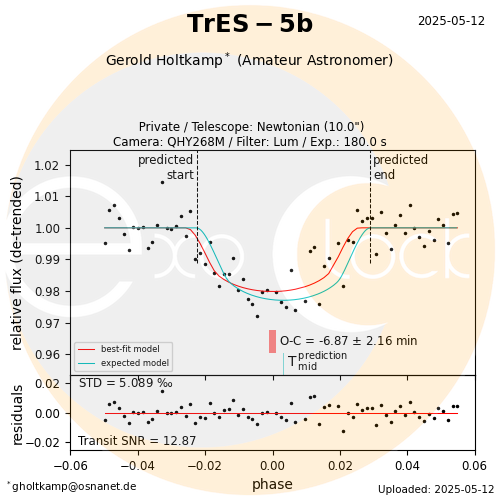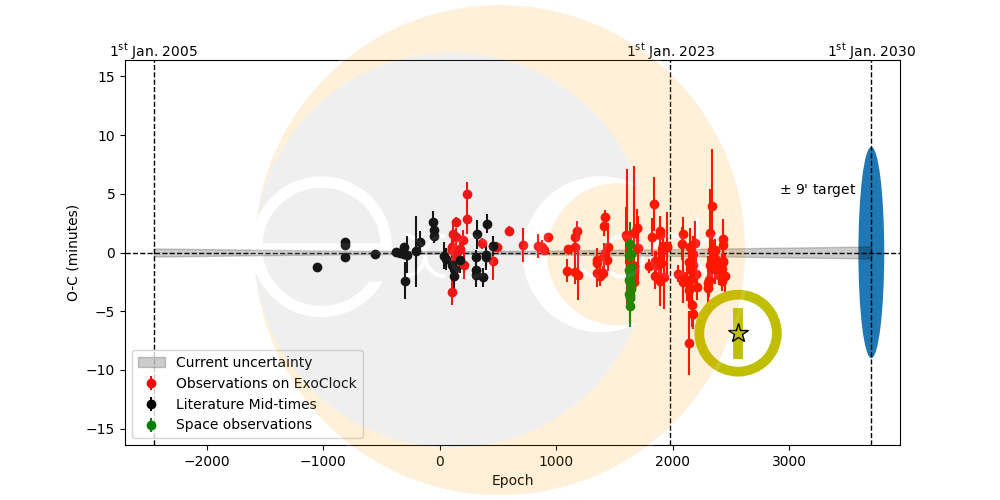Contribution by Dr. Gerold Holtkamp, June 2025
The exoplanet and its parent star are located in the constellation Cygnus, on the border with Cepheus. The measurements were taken from May 11, 2025, 10:13 PM UTC to May 12, 2025, 1:57 AM UTC in Osnabrück, Sonnenhügel. The moon was 99% illuminated but 104° away, so it could not shine into the telescope. It rose on May 11, 2025, at 6:22 PM UTC and set on May 12, 2025, at 3:00 AM UTC.
The measurement technique used:
Telescope: Skywatcher Newton 250/1200 mm
Mount: Skywatcher AZ-EQ6
Filter: Luminanz (Antlia)
Camera: QHY268M with gain 60, offset 20, chip temperature -10° C
Guiding: Skywatcher Guidescope Evoguide 50 ED with camera ZWO ASI120mm
NINA was used for camera and mount control.

The present measurement and the subsequent evaluation with the hops software of the Exoclock-Project resulted in:
Rp/Rs = 0.1331 +/- 0.0052 (expected 0.142 +/- 0.0009) *
–> Rp = 0,1331 x 631.580 = 84.063 +/- 3.284 km. [1]
The measured Rp/Rs value is slightly too small compared to the expected value. Based on the measured values, the exoplanet KPS-1b is slightly larger than Jupiter (radius = 69,911 km). The system is 1,174 light-years from Earth.

The transit's midpoint, which is important for the Exoclock project and is expressed as the difference between the observed and expected values, is significantly lower than the expected value at O-C = -6.87 +/- 2.16 minutes.** The full moon may have influenced the accuracy of the measurement.
The measurement of the transit light curve of the exoplanet Qatar-1b was published on the Exoclock project website. [2]
_________________________________________________________________________________
* [Rp = Rplanet, Rs = Rstar]
If the star's radius is known, the planet's radius is determined directly from the dip in the light curve. (see also https://kosmos-os.de/messung-der-transitlichtkurven-der-exoplaneten-wasp-84b-und-kps-1b-am-7-und-8-maerz-2024)
** [O = Observed, C = Calculated]
[1]
Data on the star system and the exoplanet at
https://exoplanetarchive.ipac.caltech.edu/overview/tres-5
The radius of the parent star was taken as 0.907 +0.021/-0.017 (Gaia DR2) x the radius of the Sun. The radius of the Sun was assumed to be 696,340 km. The parent star therefore has a radius of 631,580 km.
[2]
https://www.exoclock.space/database/observations/TrES-5b_6248_2025-05-12_Gerold_1561_Lum/